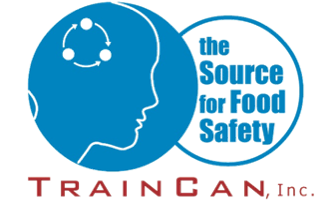The Advanced Methods for Detecting Contaminants in Food Products
Article By Kit Redwine Published May 7, 2025
Article Source: https://www.foodpoisoningnews.com/the-advanced-methods-for-detecting-contaminants-in-food-products/
Food safety remains a global priority as advancements in detection technologies help identify harmful pathogens, chemical residues, and allergens in food products. With the economic cost of foodborne illness estimated to be as much as $75 billion annually in the United States, these methods are critical for preventing outbreaks, ensuring regulatory compliance, and protecting public health.
Pathogen Detection
Pathogens like Salmonella, E. coli, and Listeria are among the leading causes of foodborne diseases. Traditional culture-based methods, which involve growing microorganisms in lab media, remain a standard for confirming bacterial presence. However, newer molecular techniques, such as polymerase chain reaction (PCR) and whole genome sequencing (WGS), provide faster and more precise identification. PCR amplifies specific DNA segments to detect pathogens within hours, while WGS offers detailed genetic profiles to trace contamination sources during outbreaks. Immunoassays, including enzyme-linked immunosorbent assays (ELISA), are also used to identify pathogen-specific antigens.
Chemical Residue Analysis
Chemical contaminants, such as pesticides, veterinary drug residues, and heavy metals, require specialized analytical methods. High-performance liquid chromatography (HPLC) and gas chromatography-mass spectrometry (GC-MS) are widely employed to separate and quantify chemical compounds in food samples. These techniques are highly sensitive, capable of detecting parts-per-billion concentrations. For heavy metals like lead or arsenic, atomic absorption spectroscopy (AAS) and inductively coupled plasma mass spectrometry (ICP-MS) are utilized due to their accuracy in measuring trace metal levels. Regulatory agencies, including the U.S. Food and Drug Administration (FDA) and the European Food Safety Authority (EFSA), set maximum residue limits (MRLs) and validate these methods to ensure compliance.
Allergen Detection
Food allergens, such as peanuts, gluten, and shellfish, pose risks to sensitive individuals. Immunoassays, like lateral flow devices (LFDs) and ELISA, are common for detecting allergenic proteins. These tests use antibodies to bind to specific allergens, producing visible or measurable signals. DNA-based methods, such as real-time PCR, identify allergen-associated genetic markers, particularly useful in processed foods where proteins may be denatured. Recent developments include biosensors and mass spectrometry-based proteomics, which offer high specificity and multiplexing capabilities to detect multiple allergens simultaneously.
Regulatory and Industry Applications
Governments and food manufacturers rely on these technologies to meet safety standards. The FDA’s Food Safety Modernization Act (FSMA) and the European Union’s Rapid Alert System for Food and Feed (RASFF) mandate rigorous testing protocols. Third-party laboratories and in-house quality control teams routinely screen products using validated methods. For instance, the USDA’s Food Safety and Inspection Service (FSIS) conducts random sampling of meat and poultry to monitor pathogen levels.
Challenges and Innovations
Despite advancements, challenges persist, including the high cost of advanced equipment, the need for skilled personnel, and detecting emerging contaminants. Researchers are exploring portable, rapid-testing devices, such as nanoparticle-based sensors and CRISPR-based diagnostics, to improve accessibility and speed. Additionally, blockchain technology and artificial intelligence are being integrated into supply chains to enhance traceability and predict contamination risks.
These evolving methods underscore the food industry’s commitment to minimizing health risks through science-driven solutions, ensuring safer products for consumers worldwide.
